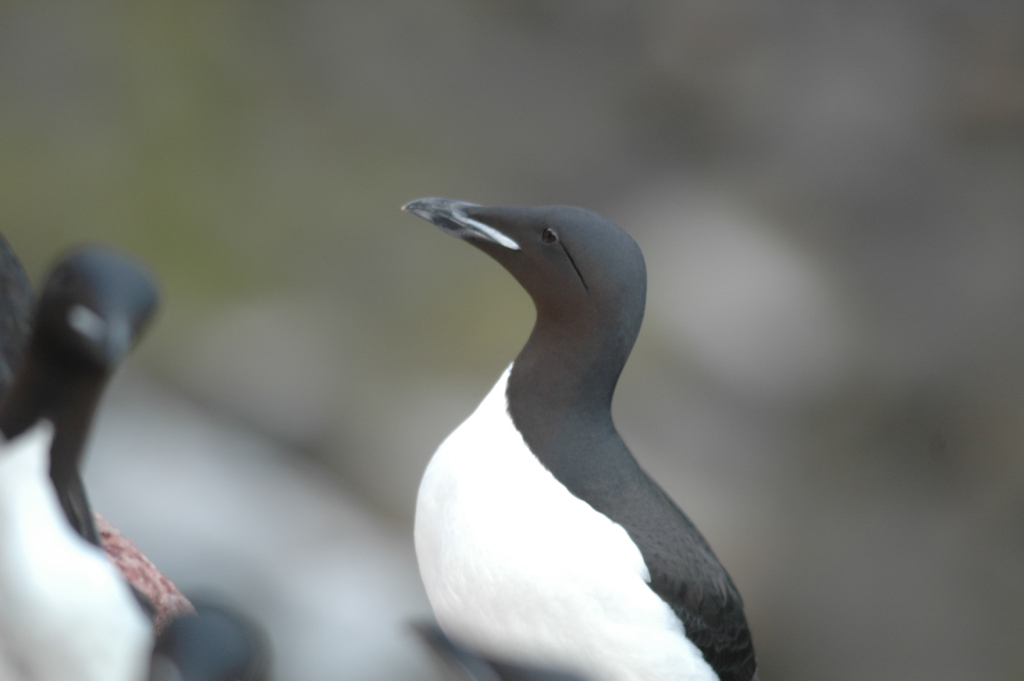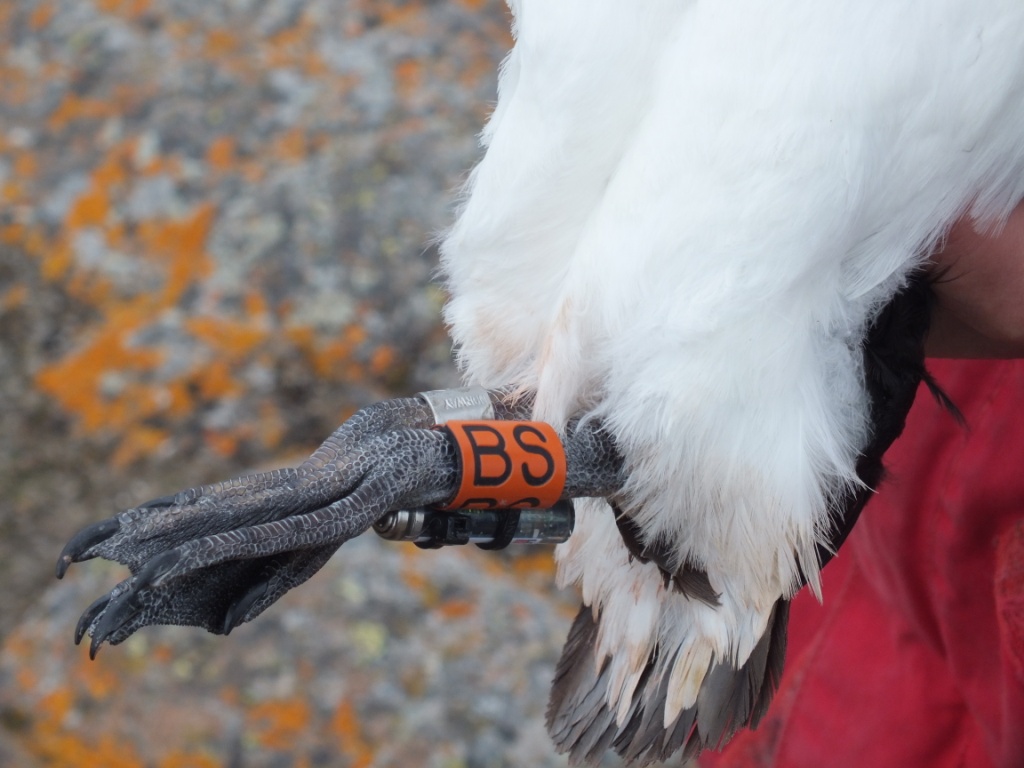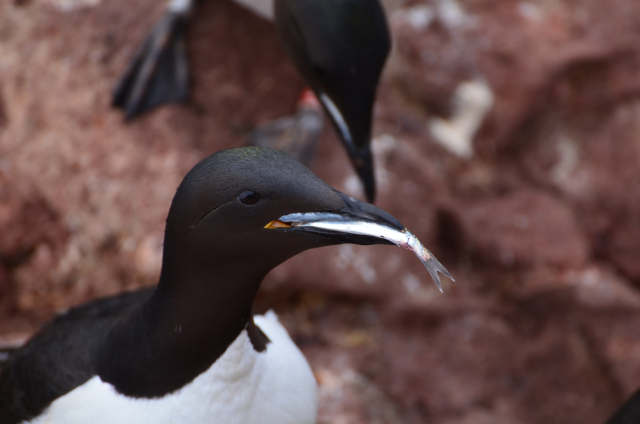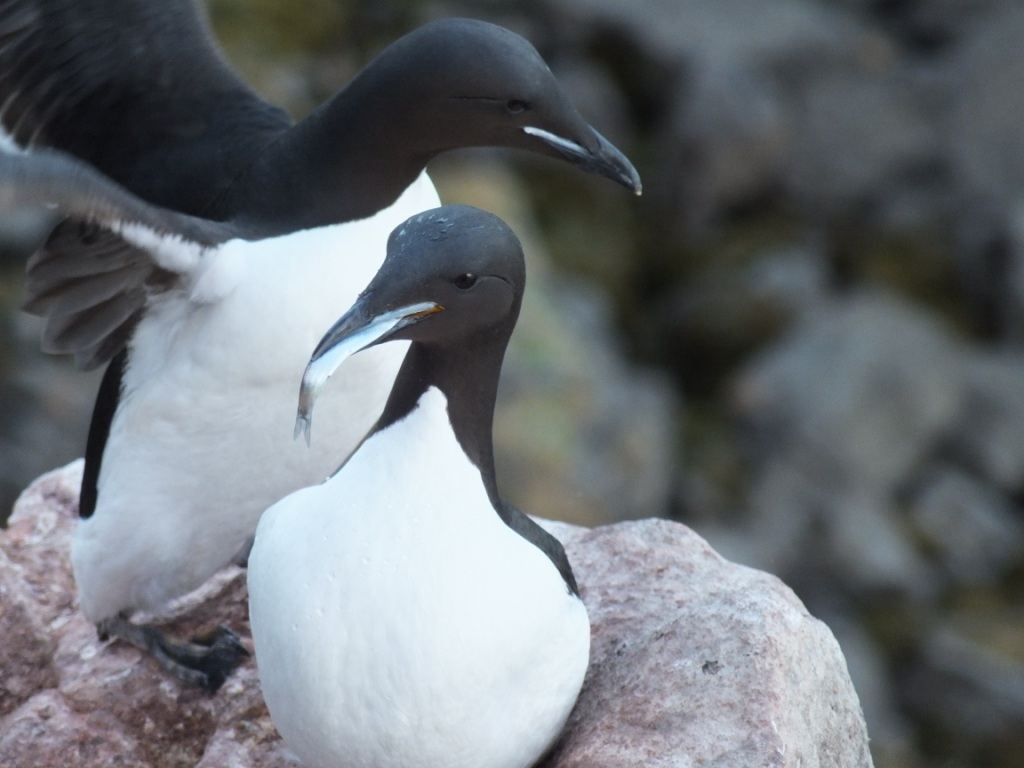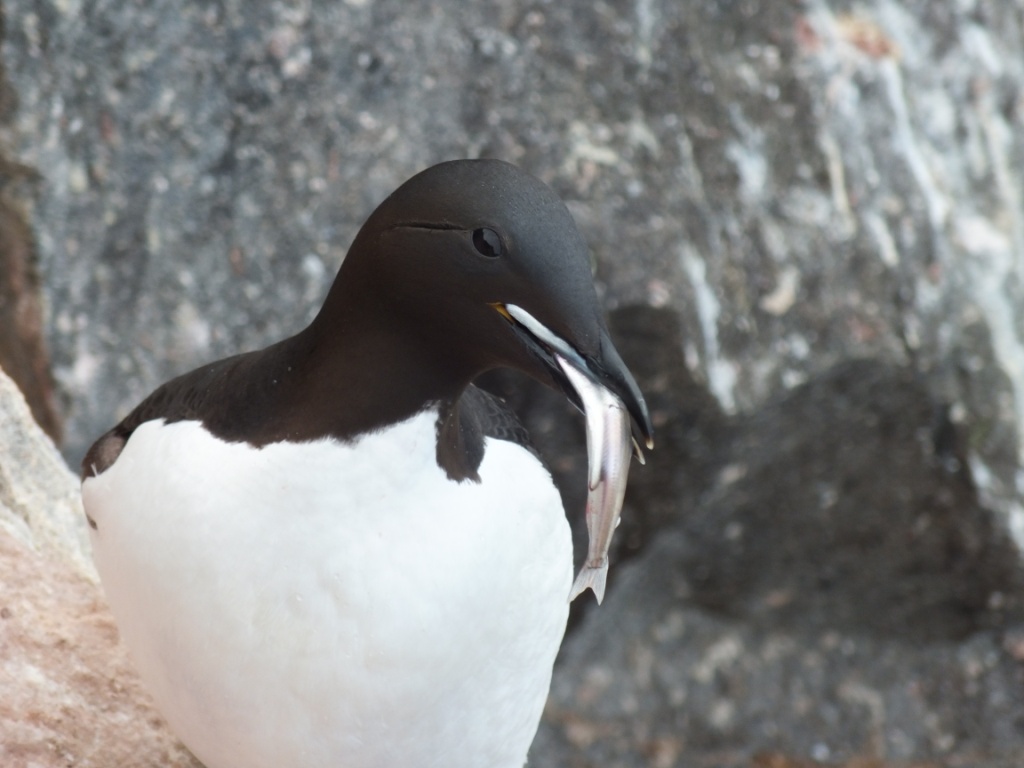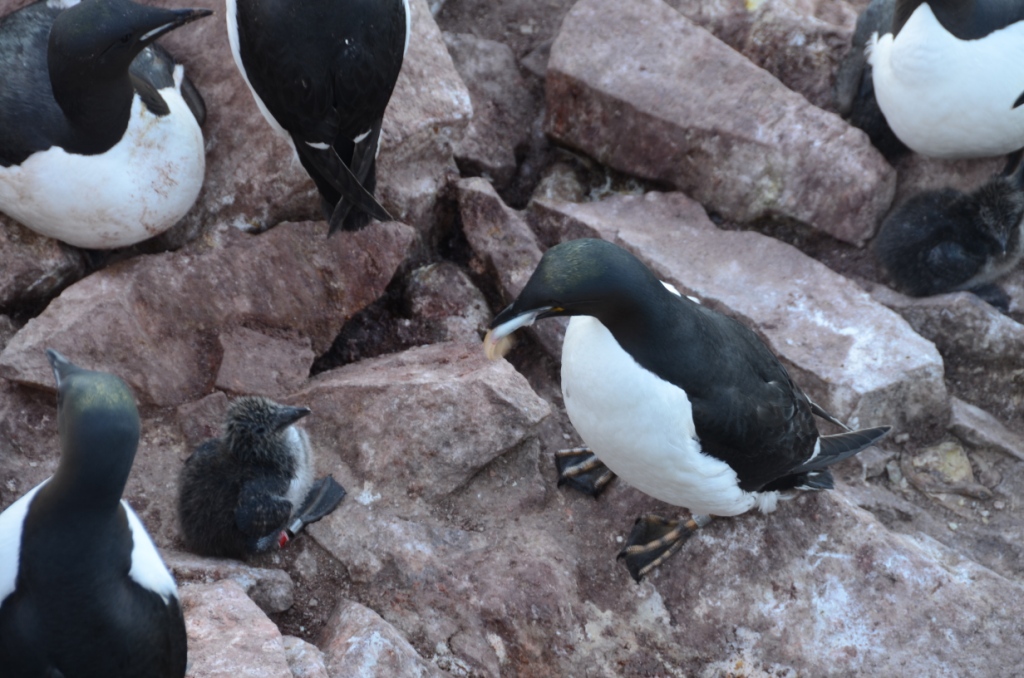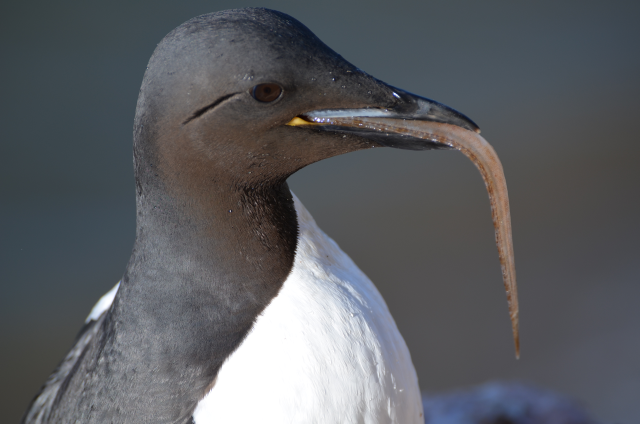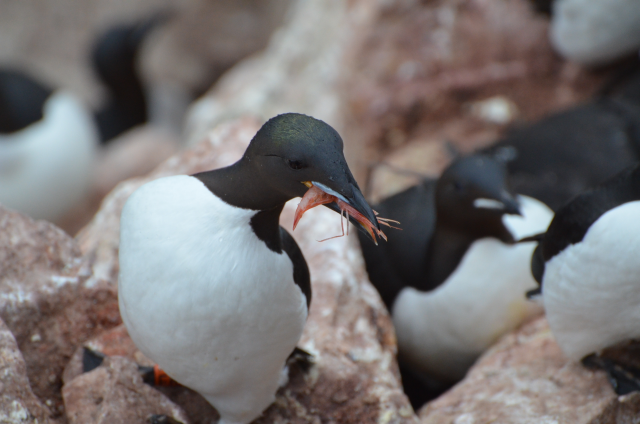I have a bit of time on my hands out here on the Newfoundland coast, tied up at the dock awaiting repairs on the vessel before continuing the oceanographic research mission – with me as seabird observer. And I began to muse about the bill stripe running along the upper mandible of the Thick-billed Murre. [Now that’s a strange musing I can hear you thinking….why that!? Why not the meaning of life or American Thanksgiving football scores or the idiocy of the Trump presidency or women…..? I don’t know; it just happened to be this stripe.]
Thick-billed Murres are amazing creatures that I had an opportunity to study for 2 Summers in Svalbard, 500 km north of Norway. They’re a 1-kilogram bundle of muscle that nest in cliff-side colonies and endure some of the toughest conditions on the planet. You don’t see them off the east coast much (or at all) during the Summer as they tend to breed in large colonies in the high Arctic. But when Winter closes in and the ice begins to form they move south and are common off the Newfoundland and Labrador coasts. Studies of Svalbard birds carrying geolocators have shown that some of their birds winter as far south and west as the east coast of Newfoundland.
But getting back to my question…..why the white stripe. When chicks hatch parents take turns flying to fishing areas and bringing back their catch. You’ve probably seen pictures of Atlantic Puffins that bring fish back to their young – they carry the fish (sometimes 2 or 3 fish) cross-wise in their bills. Thick-billed Murres don’t; they carry a single fish lengthwise with the head in their throat and the tail, if the fish is big enough, protruding beyond the end of their bill. I was wondering if the two were connected; i.e., the white stripe and the fish carried longitudinally.
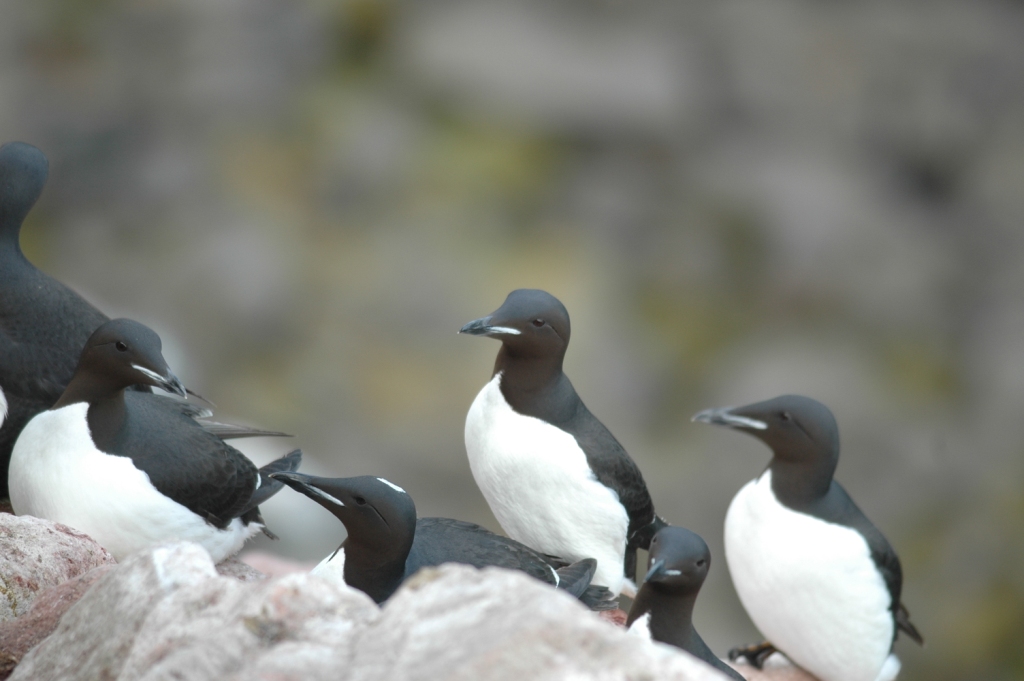
Thick-billed Murres showing their discriminating bill stripe – a field mark that readily distinguishes them from Common Murres.
In Svalbard (and I would imagine most murre colonies) kleptoparasitism by jaegers (in my colony’s case Parasitic Jaegers) is common. Now provisioning a chick is hard work for a murre. Their wings aren’t really designed for elegant flying, twisting and turning, etc. They’re dual purpose appendages: to fly directly from the water to wherever in direct flight or to fly underwater to catch fish. Once they have caught a fish they have to beat their wings hard and fast to get enough lift to get up to the cliffside to pass it on to their progeny. It’s difficult and energy-consuming work. If they’re pursued and harried by a jaeger to the point that they’re forced to drop the fish, they have to start all over again – the chick doesn’t get fed and the adult uses up extra energy to resupply. And in bad weather conditions this could be deadly.
Now a jaeger has to see that a potential victim is carrying prey. If the bill stripe looks like a fish then it is more difficult for the jaeger to discern that a murre is bringing home a meal. And a bit of hesitation could mean the difference between success and failure, maybe even life and death, for the murres. It’s just a thought….but it makes some sense to me.
Here’s some more examples:
Of course, if the fish is too long and extends well beyond the bill or the fish is not a fish but maybe a…..pink shrimp with extending appendages…then it would be easier for the jaeger to see. [One adult in the Svalbard colony fed only shrimp to its shick – I wonder if there might be some adaptive fallout from that…..]
Rick

